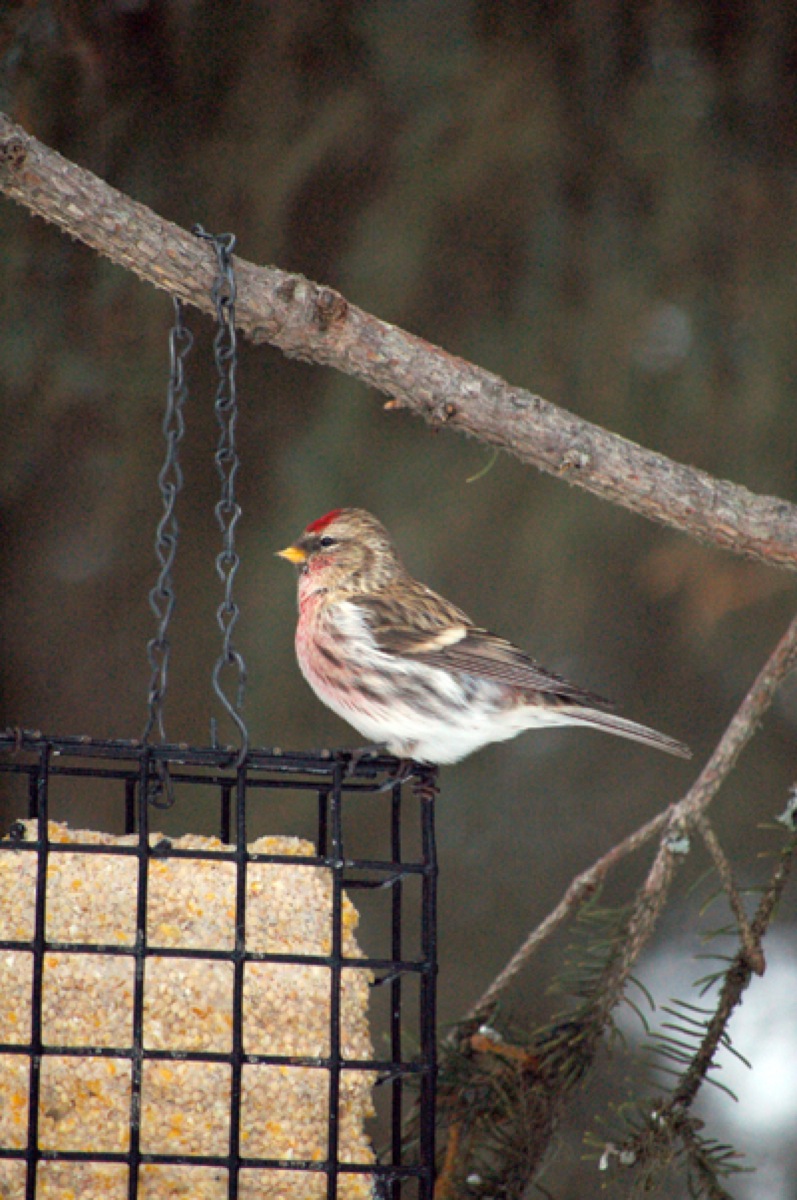It began and ended with a murder of crows.
Wait — I don’t mean “murder” as in killing crows, but “murder” as in the traditional name for a group of crows. That kind of murder. Last Friday to Monday, from counting tidings of magpies to unkindnesses of ravens, I joined about 18 Homer area birders in the Great Backyard Bird Count, a four-day international citizen-science project to create a real-time snapshot of where birds can be seen toward the end of winter and right before they begin spring migrations in March.
To get ready for the bird count, I did a trial run last Thursday afternoon after work at Mariner Park. Around a pile of stored picnic tables and on the ground, dozens of crows perched at the park. This could be tricky, I thought.
That was one of the guidelines for the count: count as many as birds possible over a single day. “Backyard” in the Lower 48 might literally mean that, but in Alaska where we have one of the biggest backyards in the nation, that also can mean the land around us as we ski, walk on the beach and drive to work.
The rules for the count were simple:
* Observe birds for at least 15 minutes in any area;
* Identify birds by species;
* Count the number of birds;
* Tally the largest number of birds seen for that date; and
* Enter tallies on the Great Backyard Bird Count website.
“If you say you see five crows one time, eight another time, you count as eight,” explained local birder B.J. Hitchcock. She said you don’t count 13 crows total.
Started by the Cornell Lab of Ornithology at Cornell University, the Great Backyard Bird Count has been going on 16 years. This year the bird count connected with Cornell’s e-bird online logging system, which assembles the information in one big database, but can be hard to sort out data on a local basis. It does show larger trends, like last year when birders all over reported seeing snowy owls.
“That was a big thing,” Hitchcock said. “Snowy owls are doing well then.”
George Matz, a lifelong birder and the current chair of the Kachemak Bay Birders, said that locally the Great Backyard Bird Count also shows transitions year to year in bird behavior. For example, one bird that showed up this year is the robin. Birders reported seeing small flocks of robins feeding on mountain ash berries along Pioneer Avenue. In 2011 at Christmas, the berries had been stripped from the trees.
“There’s still some around,” Matz said of the February mountain ash berries. “Consequently, there are still a lot of birds feeding on those berries.”
The biggest count of one species was for the common redpoll, a fluffy little brown-striped bird with a distinctive red patch on its head. That’s another birding trick: look for distinctive marks like red spots. Birder Brad Benter recorded 500 redpolls on the Homer Spit.
My counts of birds were low — an unkindness of four ravens and a dozen glaucous-winged seagulls on my first day — but when I checked out a neighbor’s bird feeders on Sunday, I saw 100. Hitchcock recommended the “count by 10” method, where you count a group of 10 birds and then count similar size groups.
Online tallies do alert other birders to rare species. Matz said through that web interactivity, people release there might be a bird they’ve heard about but haven’t seen, such as the brambling. Previously birders thought them rare. When other birders reported them, people realized they weren’t that rare.
“That’s kind of the whole thing with the Great Backyard Bird Count,” Matz said. “It makes all that information easy and more accessible. People get some idea of what to expect.”
I found that out on Monday when I saw some kind of duck dive into the bay off the Spit. Was that a bufflehead? I asked myself. I went to the backyard bird count website to see if others had reported a bufflehead, and sure enough, someone had.
Other citizen science birding projects include the Audubon Society annual Christmas bird count, Project FeederWatch and the Kachemak Bay shorebird monitoring that Matz helps organize.
By the end of the count I’d gotten the hang of looking for birds. At sunset on Monday I went to Mariner Park for one last observation period. I thought I would be skunked, with not even a gull to be seen. Then three ravens flew by, whirling around and squawking. A bald eagle soared overhead. Off in the distance I saw a black bird. Another raven? Nope, I heard that distinctive crow caw. One by one, a murder of crows lined up by the surf. Five, ten, 15 … 65 crows later, I had my final count of the day.
Michael Armstrong can be reached at michael.armstrong@homernews.com.
Great Backyard Bird Count
Feb. 15-18
Homer area results
(Anchor Point to East End Road — unofficial)
Observers: 19
Number of
species seen: 40
Highest number
of birds seen:
500 redpolls,
Homer Spit
Lowest number of birds seen: 1, ring-necked pheasant, common loon, sharp-shinned hawk, pigeon guillemot, northern hawk owl, golden-crowned kinglet, fox sparrow
Total number of
birds seen:
At least 2,000
World number of species seen:
2,975
World total of
birds seen:
22,623,732
For more information: Great Backyard
Bird Count
website at ebird.org/ebird/gbbc/
Other citizen science birding: Audubon Christmas Bird Count, Project FeederWatch, Kachemak Bay Shorebird Monitoring
Kachemak Bay Birders Next meeting:
4:30 p.m. Tuesday, Alaska Islands and Ocean Visitor Center
Talk: “The Birds of Midway Atoll National Wildlife Refuge,” by Michelle Michaud
For more information: Call Lani Raymond at 235-9477
Kachemak Bay Birders field trips every second Saturday, location to be announced.


